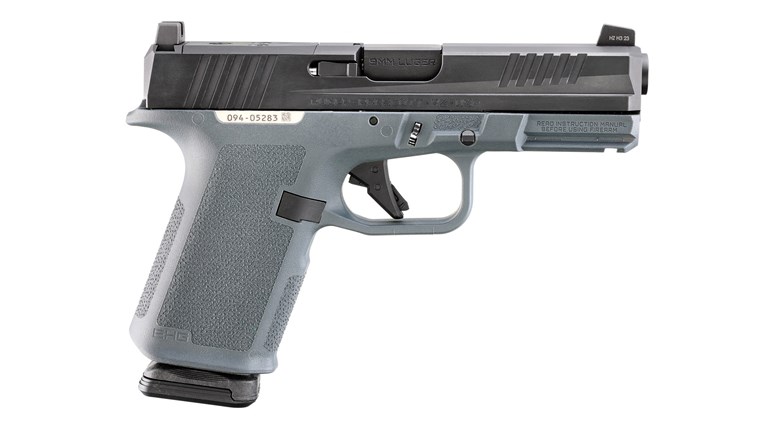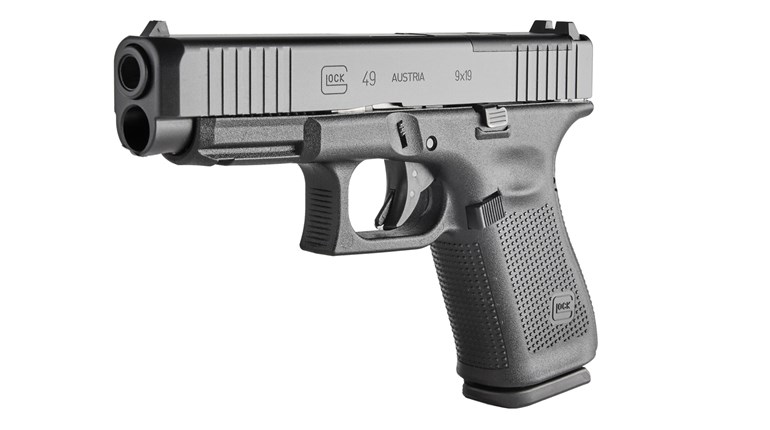
Suarez International
Glock pistols, we know, don’t have feelings to hurt. This may be a revelation to a few folks (though they are unlikely readers of “First Gear,” we concede)—progressives, mainly, who quite commonly epoxy themselves to pagan notions like the moral agency of inanimate objects. But we digress.

All the same, some Glock owners may be feel a trifle sabotaged these days, MOS-tified (bwahahahahaha—a writer joke) by the speed with which their otherwise rugged, easy-to-maintain and fabulously reliable pistols have been relegated to “so yesterday” status by the latest red-dot-ready MOS versions (here and here).
Well buck up, ladies and gents: Gabe Suarez and Suarez International have come up with a way to plaster a grin back on your face, and MOS-like capacity on many an older Glock. Keep everything you love about that broke-in beauty, but add the latest sight technology without ever letting go.
Even being deliberate, we had our rig running in only 15 minutes.Suarez International’s L-Mount sight base does just that for owners of pre-MOS Glocks. Through the simple expedient of a replacement drilled-and-tapped cover plate at the back of the slide and removal of the existing rear sight, the long leg of the “L” slides into the existing dovetail with a few taps and supports a Trijicon RMR of your choosing. The short leg meanwhile puts a hole of its own over the new cover plate—a little blue Loctite later, and the mount is secure with your RMR up and running.
All we need now are some cheesy-but-dramatic, infomercial sound effects because (you guessed it): “Wait—there’s more!” Our sample came with a set of co-witness, suppressor-height sights installed, but Suarez tells us any Glock sights will work if their options for black, fiber or 3H/tritium (front) and black or 3H/tritium (rear) don’t suit.
Even being deliberate, we had our rig running in only 15 minutes. It took another 30 picoseconds to decide to head right to the range and shoot it.

We’re happy to report no drama whatever: The L-Mount worked just as promised. We had plenty of adjustment to get the dot and irons in true co-witness, and hitting the same point of aim well within what we can do without a machine rest.
A final detail may even have the Suarez folks stealing a march on our friends in Smyrna, and you may have sussed it out from our photo: As far as we can tell, the L-Mount will work on any non-MOS small frame Glock.
Visit Suarez International at SuarezInternationalStore.com.
Gen4 To Gen3 Spring Conversion
While we’re on the subject of Glock gizmos, here’s a question we get asked frequently: “I love the __________ backstrap on my Gen4, but the dual spring isn’t cooperating with my load for __________. Anything I can do?”
As it happens, yes.They are willing to trade the superior versatility of the now-standard dual spring assembly for better performance within a narrow range of velocities and bullet weights.
Take a look here, and your first reaction may be “huh?” The explanation is as simple as the Zev part is ingenious: That machined circlet fits inside the diameter of the existing hole at the end of your slide, and reduces it to provide the “stop” necessary to use earlier style springs and guide rods.
If you’re this far, we assume you know why folks would want to do this, but we give you the short version just in case. The dual-coil spring that most new Glocks feature is a really good one: We’ve used it with an astonishingly wide range of loads and had a tiny handful of malfunctions—and even these we think were our “fault.” Where it does especially well is with high-velocity loadings with lighter- to medium-weight bullets.
This might seem to imply that malfunctions happen outside this range, but we haven’t seen that either. But what some shooters—us in some cases, and especially those in certain competitive disciplines—may be after is a very particular recoil dissipation, slide speed and recovery profile. Absent the real down-in-the-weeds, nuts-and-bolts details, they are willing to trade the superior versatility of the now-standard dual spring assembly for better performance within a narrow range of velocities and bullet weights. A reducing ring lets these shooters tune with guide rods and single weight springs to make that happen. (Always check guide O.D. against spring I.D.s; they don’t all match.)
Two cautions: This is pretty technical stuff when you get right down to it—get your gunsmith to help you figure out if this is necessary or helpful in your specific situation. Lastly, buy a spare. You will lose the first one sooner or later.
These and many other parts are available from Brownells. Visit them at Brownells.com.

































